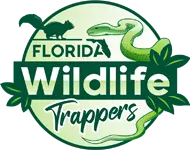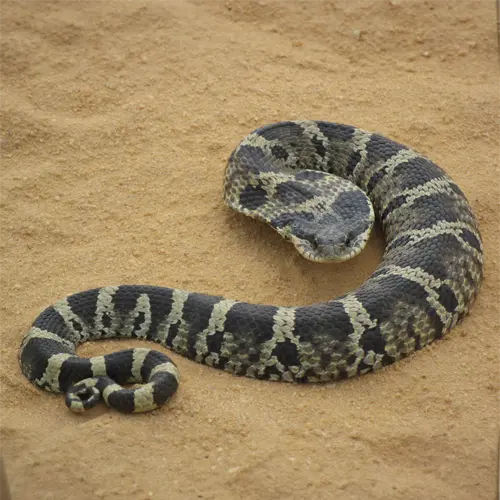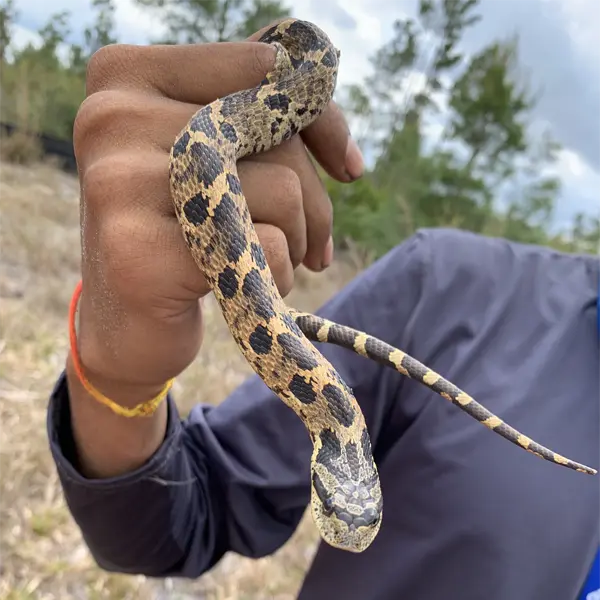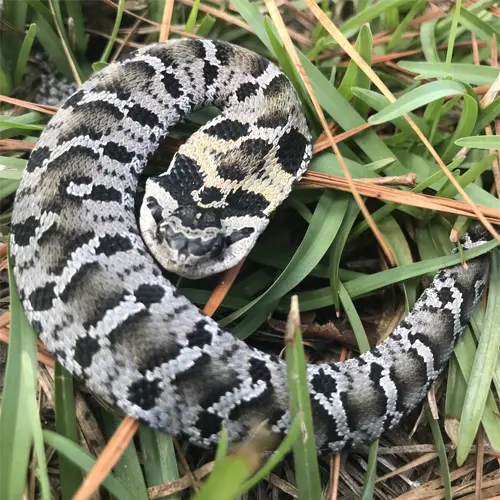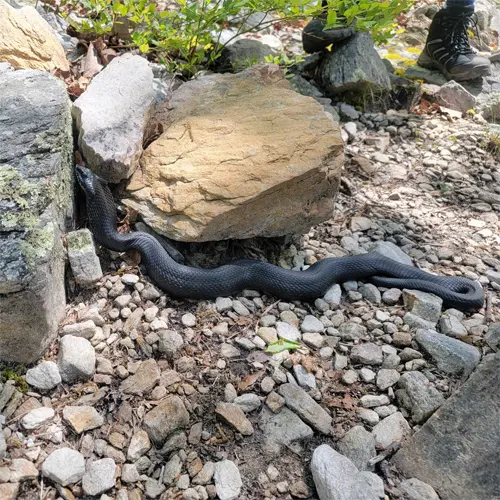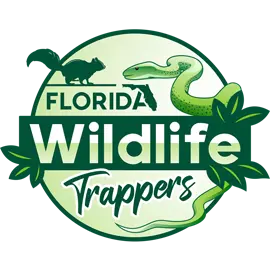Eastern Hognose Snake
- Scientific Name
- Heterodon platirhinos
- Also Known As
- Eastern Hog-nosed Snake
- Range
- All of Florida
- Diet
- Mostly Amphibians
- Life Expectancy
- ~10 Years
Quick Links
Eastern Hognose Snakes in Central Florida
The eastern hognose snake (Heterodon platirhinos) is a harmless yet fascinating species found throughout central Florida. This stout-bodied snake is known for its dramatic defensive displays, specialized diet, and key role in local ecosystems. Read on to learn about eastern hognose snake identification, biology, ideal habitat, and prevention tips if encountered near homes.
Appearance and Identification
The eastern hognose snake can be identified by the following distinct features
The eastern hognose can be distinguished from harmless ratsnakes by its distinctive upturned snout, enlarged rostral scale, and stouter physique. Venomous cottonmouths have banding on their slender bodies and more defined triangular head.
Maturation Rate
Young hognose snakes hatch at 8-14 inches long and grow rapidly, reaching adulthood after 1.5-3 years. They shed frequently to accommodate quick growth.
Habits and Behavior
Eastern hognose snakes are diurnal, most active during the day when temperatures are warmer. They spend cold periods buried underground or hidden in rotting logs and stump holes. When threatened, eastern hognose snakes display remarkable defensive behaviors:
- Hissing loudly and repeatedly inflating their neck like a cobra.
- Flattening their neck and body to appear larger.
- Rolling onto their backs and writhing around while hissing and defecating.
- Playing dead with mouth agape when handled.
Despite this dramatic show, eastern hognose bites are very rare and harmless to humans. Their enlarged rear fangs are designed for deflating toads rather than injecting venom.
Reproduction and Lifespan
Eastern hognose snakes reach reproductive maturity at 18-36 months old. Mating occurs in April-May. Females lay clutches of 4-20 eggs in June-July in sandy soil or rotting wood. Hatchlings emerge in August-October. Average lifespan in the wild is unknown but likely 10 or more years.
Ideal Habitat and Range
The eastern hognose snake thrives in central Florida’s warm, humid climate. Average temperatures range from the 60sF in northern areas to the 70sF further south. Rainfall averages 50-65 inches annually.
Preferred habitats include sandy pine and oak woodlands, palmetto scrublands, prairies, meadows, and farmland edges. Their stout build allows them to burrow readily in loose soils. Rotting logs, mammal burrows, and dense ground litter provide shelter.
Central Florida’s mix of natural habitats and agricultural areas surrounded by expanding suburbs offers prime resources. Rats, toads, and eggs abound near farmlands. Urban parks and undeveloped lots harbor prey. The loamy soil enables burrows.
Diet and Feeding
Eastern hognose snakes specialize in eating amphibians like frogs and toads. They use their enlarged rostral scale to dig up hiding toads. Small mammals, birds, eggs, lizards, and insects round out their diet. Snake fangs and venom evolved to puncture and deflate toads.
Hognose snakes kill prey by constriction, coupled with their mildly venomous saliva. They release prey and reposition between swallows, likely to avoid toad toxins.
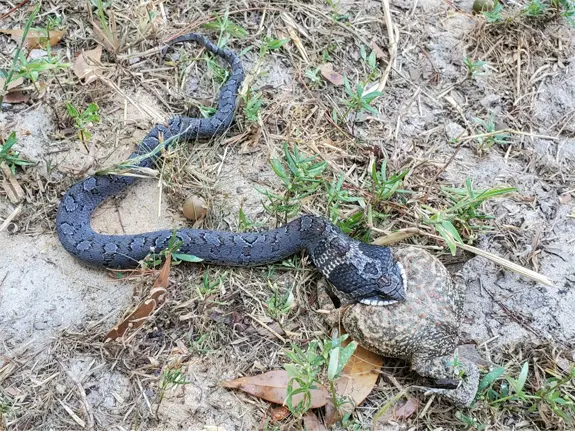
Photo 96637147 © crusador303, CC BY-NC

Common Health Risks
Eastern hognose snakes pose no serious health risks to humans. Their enlarged rear fangs cannot penetrate human skin. The mildly toxic saliva may cause temporary swelling if bitten. Allergic individuals may react worse. No antivenom exists but medical attention for severe reactions is recommended.
Some risk of Salmonella exposure exists if handling snakes without proper hygiene. Hand washing minimizes this risk.
Overall, eastern hognose snakes do not aggressively bite and lack functional venom. Their dramatic bluffing behaviors effectively avoid human confrontation.
Preventing Eastern Hognose Snakes
Eastern hognose snake encounters are inevitable in central Florida given the overlap with human settlements. Remaining calm and still allows snakes to retreat safely. Never approach or kill the snake.
To discourage them near homes, keep yards free of heavy ground litter and rock piles which offer shelter. Seal any gaps in foundations and install mesh screens on vents. Consider relocating brush piles and woodpiles farther away.
Population reduction is unnecessary given the lack of danger to humans. Pesticide use against snakes is illegal in Florida. Catching and relocation should only be done by permitted wildlife professionals.
Eastern Hognose Snakes in Central Florida – Conclusion
The eastern hognose snake is a unique and harmless species that plays an important role in central Florida’s ecology. While startling if encountered, their dramatic defenses are all bluff. Their specialized adaptation to feed on toxic amphibians provides natural pest control.
Through habitat modification and leaving snakes undisturbed, peaceful coexistence with eastern hognose snakes is easily achieved around homes and gardens.
